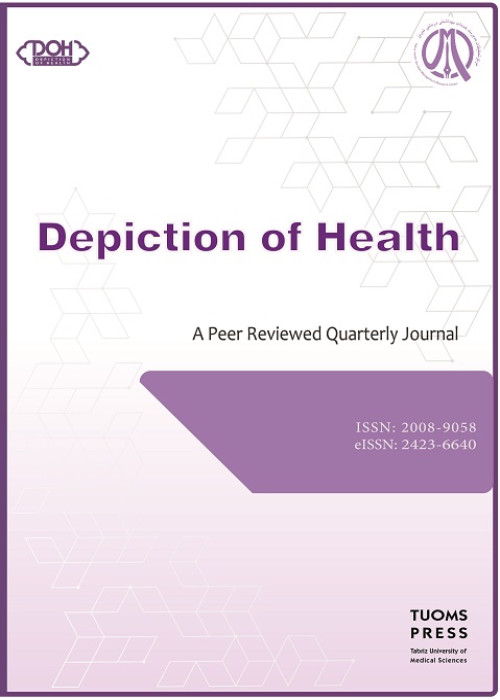Comparison of Prescribing Pattern of Prophylactic Antibiotics with the Standard Instructions in the General Surgery Departments of Hospitals
Antibiotics are widely used since they inhibit microorganisms without damaging human cells. Antibiotics are one of the most commonly used drugs in surgery because surgical site infection is the most common nosocomial infection and its prevalence reaches a maximum of 38%. Prescribing prophylactic antibiotics before surgery is a way to prevent infection at the surgical site, provided that its principles are observed. It is essential to study the ways of administering antibiotics to prevent overdose or misuse of these drugs. This study aimed to investigate the pattern of prescribing prophylactic antibiotics to patients admitted to the surgical wards of Shahid Sadoughi Hospital in Yazd, Iran and compare it with standard methods.
The present study was a cross-sectional, descriptive, and analytical study. For data collection, we used the patients’ medical records in Shahid Sadoughi hospital in Yazd, Iran.The sample size was 238 cases according to the total number of surgical records from 2019.3.21 to 2019.9.22. Out of 238 samples, 236 cases were considered acceptable and two cases were excluded as they were related to breast surgery, including mastectomy with axillary lymphatic dissection, reconstruction, and reoperation within six weeks of initial surgery. We excluded these cases because their number was not large enough to be able to generalize their results. Each case was randomly studied for each surgery, so that the share of each surgery was determined in proportion to their total number. A checklist was designed to collect the required information. This checklist included information about the patients' age, type of health insurance, type of general surgery ward, time of preoperative prophylactic antibiotics, type of preoperative prophylactic antibiotics, and duration of continued postoperative antibiotics. It also included two questions about re-admission resulting from wound infection and administration of oral antibiotics after discharge, as well as two questions regarding the compliance of prescribed prophylactic antibiotics with clinical guidelines. Significance level in all research tests was considered less than 0.05.
The results showed a significant relationship between the patients' age and the time of administration of preoperative prophylactic antibiotics, type of preoperative prophylaxis antibiotics, and administration of oral antibiotics after discharge based on clinical guideline (P <0.05). However, the type of preoperative prophylactic antibiotics seems to have been observed only in the age groups 1-15 and 46-60, as dictated by the standard method, while the oral antibiotic component has been prescribed for other age intervals after discharge except for the age range of 1-15 years. There was also a significant relationship between the type of general surgery and the time of administration of preoperative prophylaxis antibiotics, the type of preoperative prophylaxis antibiotics, and the administration of oral antibiotics after discharge according to the clinical guidelines; this means that the time of preoperative prophylaxis was prescribed. According to the clinical guidelines, except for thyroid and parathyroid surgeries, it was not observed in the other cases. The prescription of prophylactic antibiotics according to the standards was found to have been observed only in non-obstructive small bowel surgeries, open or laparoscopic hernia repair operations with mesh, and thyroid and parathyroid implants. It should be noted that in accordance with the administration of oral antibiotics after discharge with the type of surgery, in all cases except open or laparoscopic hernia repair surgery with antibiotics, antibiotics are also prescribed after discharge. Moreover, there was a significant relationship between the type of prophylactic antibiotics used before surgery and the type of preoperative prescription antibiotics according to the clinical guidelines, and the highest standard in the type of prescription antibiotics was related to cefazolin. In other cases, no significant relationship was observed between the compared variables.
The administration of prophylactic antibiotics in the general surgery department does not comply significantly with the standard instructions. It seems that the choice of prophylactic antibiotics is based on the surgeon's experience, patient characteristics, type of surgery, and the instructions available in different hospitals. However, it is essential to follow the recommendations mentioned in the instructions for timely administration of prophylactic antibiotics and their duration after surgery because long-term use of antibiotics leads to drug resistance and increased use of expensive, end-of-line antibiotics, which continues for a long time. The duration will have adverse effects on the economic and medical system of the hospitals as well.
- حق عضویت دریافتی صرف حمایت از نشریات عضو و نگهداری، تکمیل و توسعه مگیران میشود.
- پرداخت حق اشتراک و دانلود مقالات اجازه بازنشر آن در سایر رسانههای چاپی و دیجیتال را به کاربر نمیدهد.


